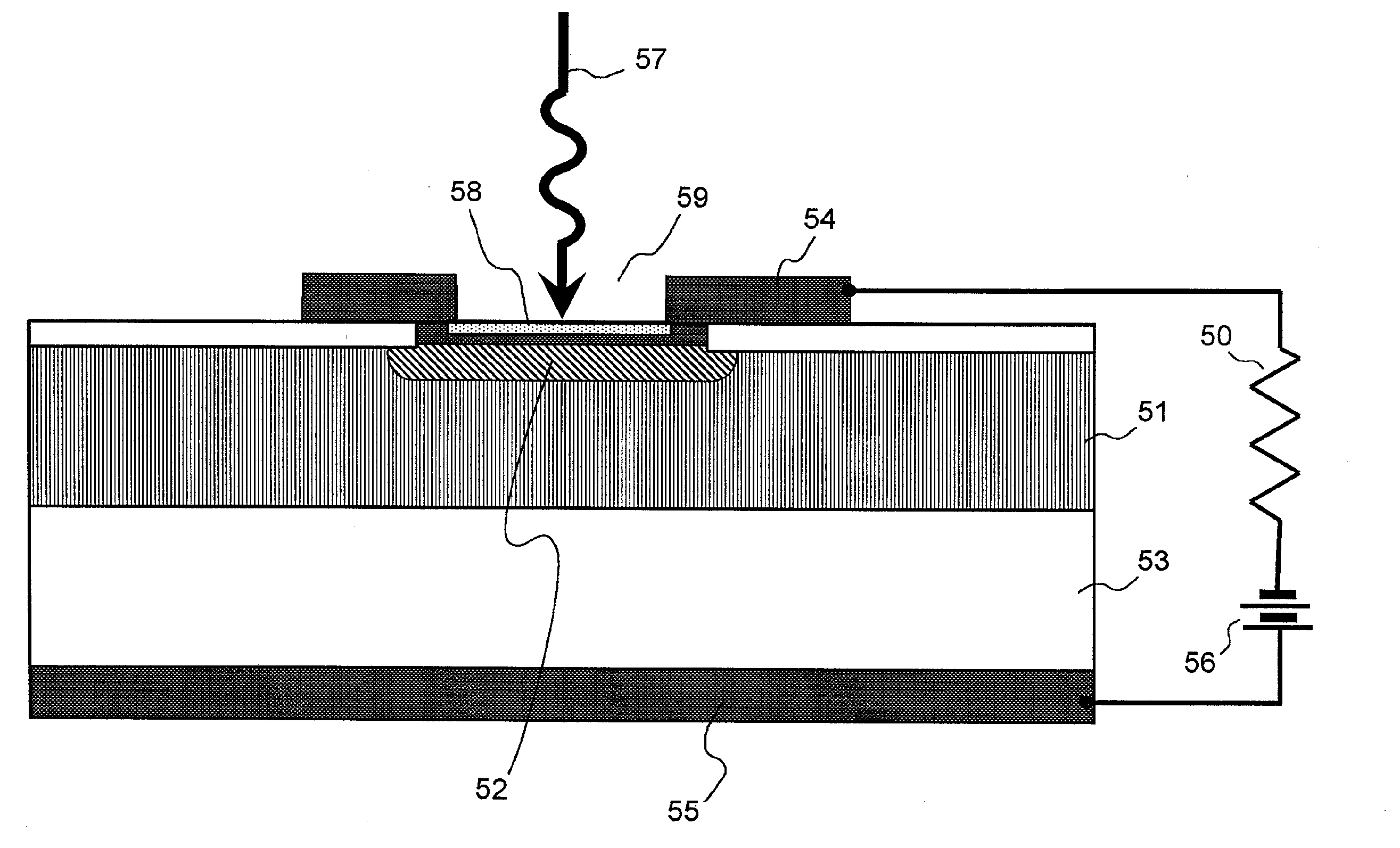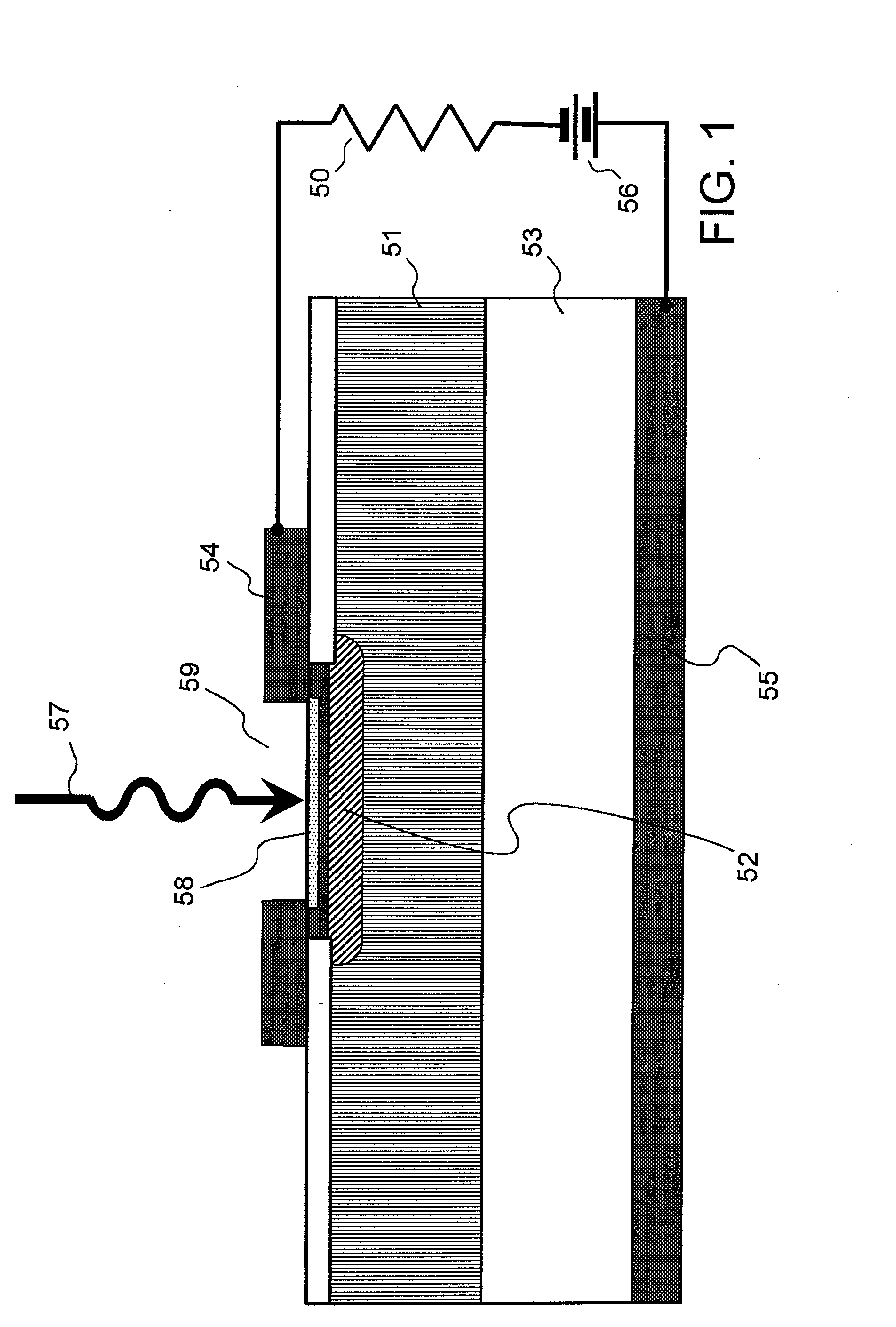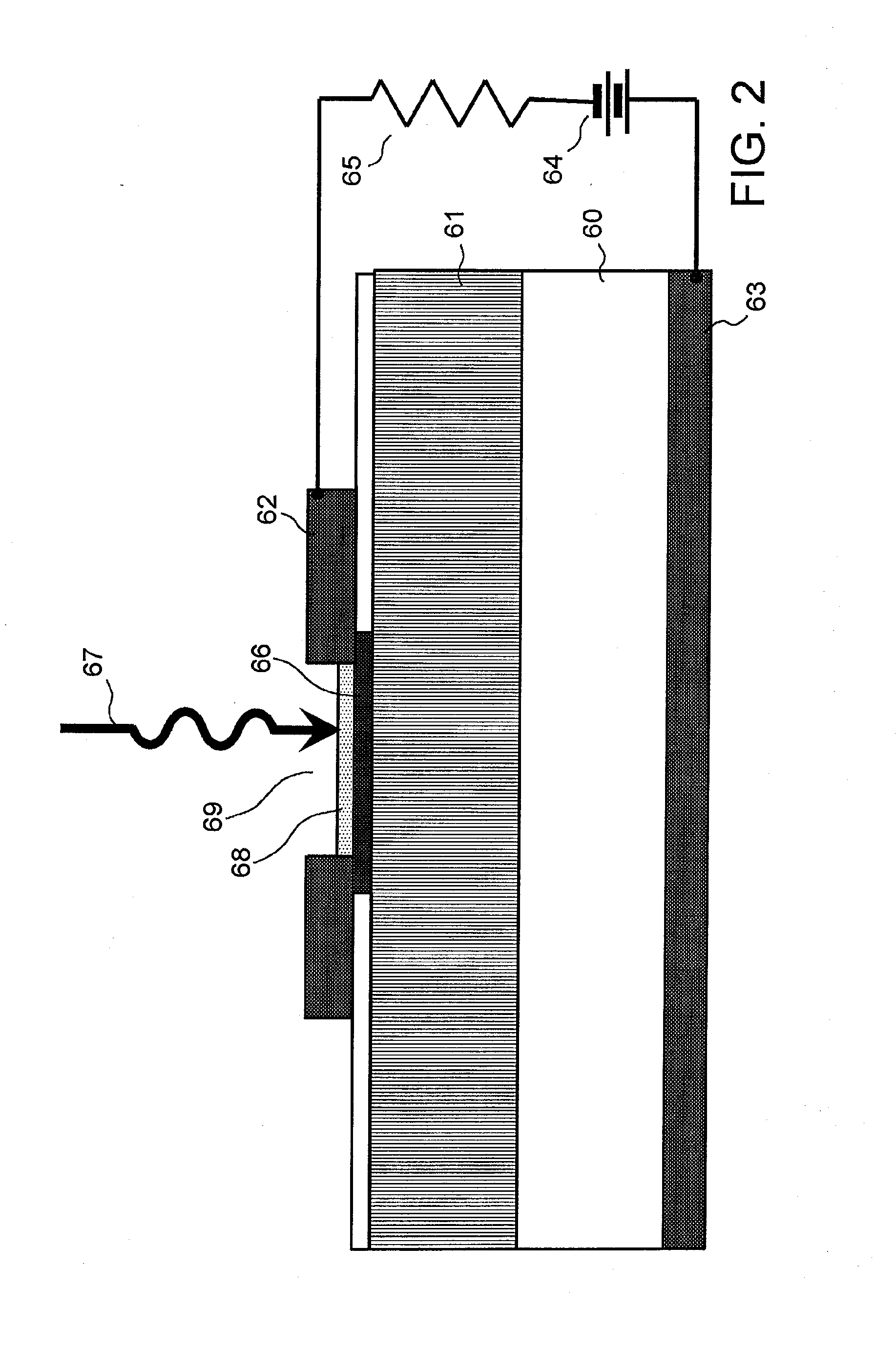Photodiode and method for fabricating same
a photodiode and photodiode technology, applied in the field of photodiodes, can solve the problems of reducing the utilization of signal light, reducing the sn ratio (signal-to-noise ratio), and increasing the vulnerability of the device to thermal noise, so as to achieve the effect of reducing the sn ratio
- Summary
- Abstract
- Description
- Claims
- Application Information
AI Technical Summary
Benefits of technology
Problems solved by technology
Method used
Image
Examples
first embodiment
[0094] Explanation next regards a Schottky photodiode according to a first embodiment of the present invention. The Schottky photodiode of the first embodiment is configured as a planar photodiode. FIG. 4 is a partial sectional perspective view showing the overall configuration of this photodiode, and FIG. 5 shows an enlargement of this sectional view.
[0095] The Schottky photodiode shown in the figures is provided with: n+-type semiconductor layer 2 formed on a portion of substrate 1 such as SOI (Silicon-On-Insulator) in which the surface is insulating; n−-type semiconductor layer 3 provided on a portion of n+-type semiconductor layer 2; metal periodic structure member 4 that contacts n−-type semiconductor layer 3 and that has electrical conductivity; first electrode (anode electrode) 5 connected to metal periodic structure member 4; second electrode (cathode electrode) 8 that confronts first electrode 5 and contacts n+-type semiconductor layer 2; bias power supply 9 for applying a...
second embodiment
[0126] Explanation next regards the Schottky photodiode according to the second embodiment of the present invention. The photodiode of the first embodiment was of the planar type, but the photodiode of this second embodiment uses an insulating substrate and arranges the first electrode on the front surface of the substrate and the second electrode on the rear surface. FIG. 15 shows the configuration of a photodiode that is the second embodiment.
[0127] As in the case of the first embodiment, on the surface of insulating substrate 16, aperture 18 is provided at the center and metal periodic structure member 17 having a periodic structure realized by concentric surface irregularities is formed around aperture 18. As with the photodiode shown in FIGS. 4 to 6, aperture 18 does not completely penetrate metal periodic structure member 17. First electrode (anode electrode) 19 that is electrically connected to metal periodic structure member 17 is further provided on the surface of substrat...
third embodiment
[0132] Explanation next regards the Schottky photodiode according to the second embodiment of the present invention. The photodiode of the third embodiment shown in FIG. 16 is similar to the photodiode of the first embodiment but differs in that minute scattering member 40 for scattering light is provided on the bottom surface of aperture 6 provided in metal periodic structure member 4. As the material for this scattering member 40, a material in which the electrical resistance is low in the region of the wavelength of light is appropriate, and the same metal material as used for metal periodic structure member 4, for example, silver, gold or the like, can be used. The volume and shape of scattering member 40 has an influence on the state of surface plasmon resonance, scattering members 40 of sizes ranging from about 5 nm square to the same order as the wavelength of incident light exhibiting a broad range of effects. Scattering member 40 can have, for example, a cylindrical or squa...
PUM
 Login to View More
Login to View More Abstract
Description
Claims
Application Information
 Login to View More
Login to View More - R&D
- Intellectual Property
- Life Sciences
- Materials
- Tech Scout
- Unparalleled Data Quality
- Higher Quality Content
- 60% Fewer Hallucinations
Browse by: Latest US Patents, China's latest patents, Technical Efficacy Thesaurus, Application Domain, Technology Topic, Popular Technical Reports.
© 2025 PatSnap. All rights reserved.Legal|Privacy policy|Modern Slavery Act Transparency Statement|Sitemap|About US| Contact US: help@patsnap.com



